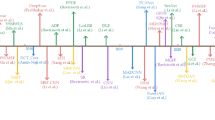Abstract
Astronomical surveys provide an amazing amount of information for the understanding of specific astrophysical problems, from the large scale structure of galaxy clusters, to the formation of stars. Large scale surveys are often complemented with smaller surveys based on many pointings in areas of special interest. The World Space Observatory-Ultraviolet (WSO-UV) is the coming 2-m class facility for UV astronomy. The imaging instrument in WSO-UV is ISSIS (Imaging and Slitless Spectroscopy Instrument). A fraction of the ISSIS science will involve mapping and analyzing areas of the sky extending many arc minutes to observe clusters of galaxies, stellar associations, star-forming regions (either galactic or extragalactic) and other interesting astronomical objects. ISSIS field of view is small (<2 arcmin) and survey strategies need to be defined, well in advance, to optimize the scientific output. We present the analysis done by our team to define optimal strategies for mapping large areas of the sky where relevant sources may be scattered in a non-random manner. The optimization problem is addressed with different mathematical programming models: Continuous, Binary and Sample-Binary Mathematical Programming Models, as well as through heuristic approaches. A set of optimization algorithms is defined for various surveying strategies based on mathematical approaches.






Similar content being viewed by others
Notes
Solar blind detectors are characterized for having a negligible sensitivity to photons with wavelengths above some 3200 Å . This is a common requirement for detectors intended to observe the UV radiation from solar-like stars since the photospheric flux is very high compared with the UV radiation produced by the high atmospheric layers.
Matlab is a programming language developed by MathWorks, see www.mathworks.com
References
Ahn, C.P., Alexandroff, R., Allende, C., et al.: ApJS 203, 21 (2012)
Ashby, M.L., Willner, S.P., Fazio, G.G., et al.: ApJ 769, 1 (2013)
Bazaraa, M.S., Sherali, H.D.: Nonlinear Programming Theory and Algorithms. Wiley, Hoboken, New Jersey (2006)
Garey, M. R., Johnson, D. S.: Computers and Intractability. Freeman and Co (1979)
Giacconi, R., Branduardi, G., Brield, U.: Ap. J. Supp. 230, 540 (1979)
Gómez de Castro, A.I., Sánchez, N., Sestito, P., et al.: ISSIS: The Imaging and Slitless Spectroscopy Instrument for Surveys in the World Space Observatory-Ultraviolet Telescope. In: Proceedings of the SPIE 8443, id. 84432W (2012)
Gómez de Castro, A.I., Sestito, P., Sanchez, N., et al.: Adv. Space Res. 53, 996 (2014a)
Gómez de Castro, A.I., Perea, G.B., Sanchez, N., et al.: ApSS, accepted (2014b)
Martin, C., Barlow, T., Barnhart, W., et al.: The Galaxy Evolution Eexplorer. In: Proceedings of the SPIE 4854, pp 336–350 (2003)
Morrissey, P., Conrow, T., Barlow, T.A., et al.: Ap&SS 173, 682 (2007)
Murthy, J., Henry, R.C., Sujatha, N.V.: ApJ 724, 1389 (2010)
Neugebauer, G., Habing, H.J., van Duinen, R., et al.: ApJ 278, L1 (1984)
In: Rayward-Smith, V.J., Osman, I.H., Reeves, C.R., Smith, G.D. (eds.) : Modern Heuristic Search Methods. Wiley, Chichester (1996)
Rothlauf, F.: Design of Modern Heuristics: Principles and Application. Springer-Verlag, Heidelberg (2011)
Shustov, B., Sachkov, M., Gómez de Castro, A.I., et al.: Ap&SS 335, 273–282 (2011)
Sachkov, M., Shustov, B., Gómez de Castro, A.I.: Adv. Space Res. 53, 990 (2014)
Shustov, B., Sachkov, M., Gómez de Castro, A.I., et al.: Ap&SS, submitted (2014)
Skrutskie, M.F., Cutri, R.M., Stiening, R., et al.: AJ 131, 1163 (2006)
Acknowledgements
This research was partially supported by grant AYA2011-29754-C03-01 from the Government of Spain.
Author information
Authors and Affiliations
Corresponding author
Rights and permissions
About this article
Cite this article
Yáñez, J., Gómez de Castro, A.I. & López-Santiago, J. Optimal strategies for surveys with WSO-UV/ISSIS. Exp Astron 38, 11–24 (2014). https://doi.org/10.1007/s10686-014-9400-7
Received:
Accepted:
Published:
Issue Date:
DOI: https://doi.org/10.1007/s10686-014-9400-7




